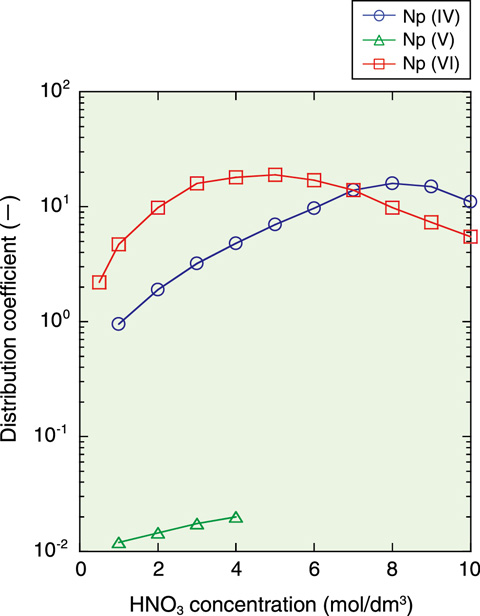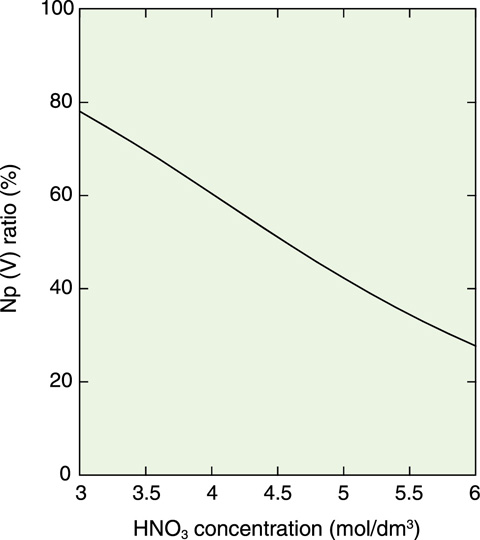
Fig.13-9 Distribution coefficient of Np in HNO3-TBP system

Fig.13-10 Relationship between Np(V) ratio and HNO3 concentration
Neptunium (Np) has a long half-life isotope (237Np: 2.14×106 y), and in conventional nuclear fuel reprocessing, it is disposed as radioactive waste with fission products in a stable geological environment. In fast reactor fuel reprocessing, uranium (U), plutonium (Pu), and Np have to be recovered at the same time from a solution, which is produced by dissolving irradiated nuclear fuel in nitric acid (HNO3) using tri-n-butyl phosphate (TBP) as an extractant. Because these elements are loaded again as nuclear fuels to fast reactors, the amount of radioactive waste will decrease.
The extractability of Np into TBP varies with its valence in the HNO3 medium; Np(IV) and Np(VI) are extracted into TBP, while Np(V) is not (Fig.13-9). Therefore, the valence of Np needs to be changed to Np(IV) or Np(VI) in order to extract Np into TBP. It is known that Np(V) is oxidized to Np(VI) by HNO3, so the variation of Np(V) ratio with HNO3 concentration was evaluated (Fig.13-10). The results show that the Np(V) ratio decreased with increasing HNO3 concentration in a solution, and high HNO3 concentrations have beneficial effects on Np oxidation. In the simplified solvent extraction process where Pu partitioning and purification sections are deleted, Np(V) has to be oxidized to Np(VI) in the feed solution as much as possible.
To confirm the Np(V) oxidation effect, countercurrent experiments were carried out using centrifugal contactors at the Chemical Processing Facility (CPF). A dissolver solution of irradiated fast reactor fuel was used as the feed solution. Using 3 mol/dm3 of HNO3 in the feed solution, 9.9% of Np leaks to the raffinate, while the leakage was less than 1.3% using 5 mol/dm3 of HNO3 in the feed solution. The experiments showed that Np(V) was easily oxidized to Np(VI) in a feed solution containing 5 mol/dm3 HNO3; this in turn promoted the extraction of Np into TBP in the centrifugal contactors.
In this study, U, Pu, and Np co-recovery was demonstrated by using a high HNO3 concentration (5 mol/dm3) of feed solution.